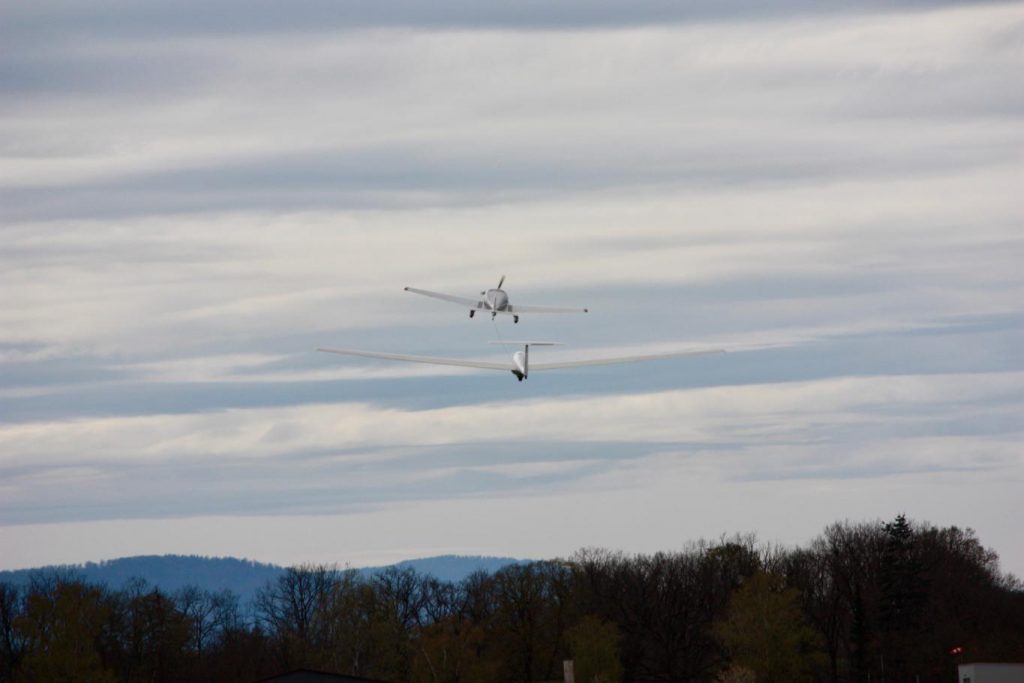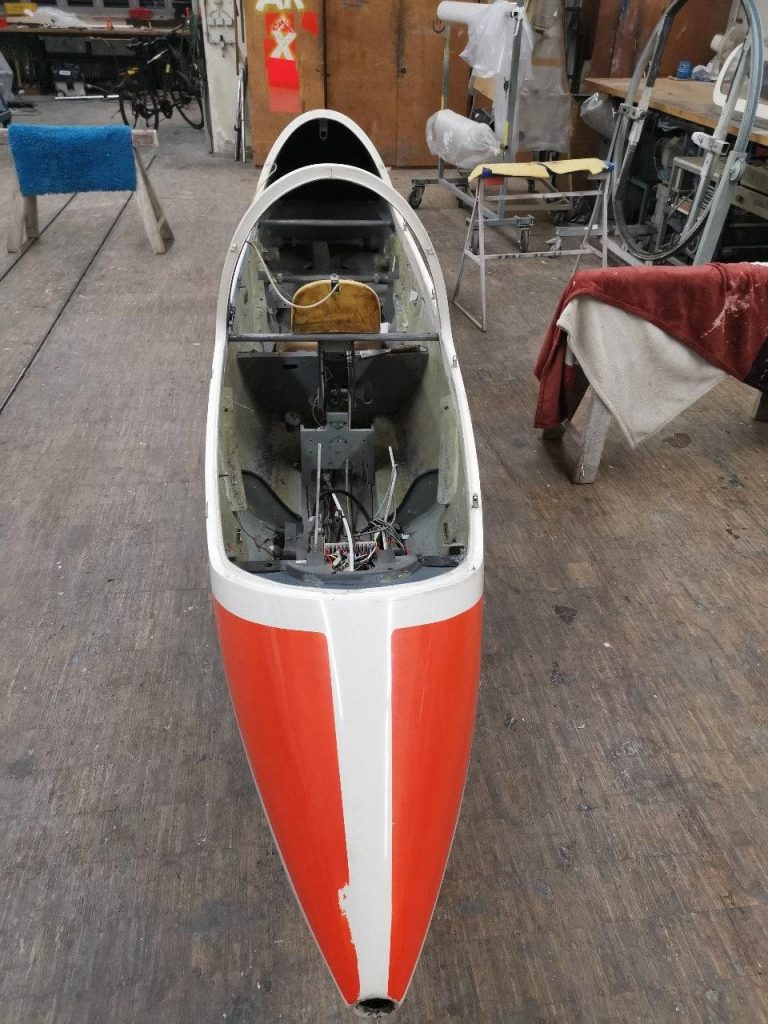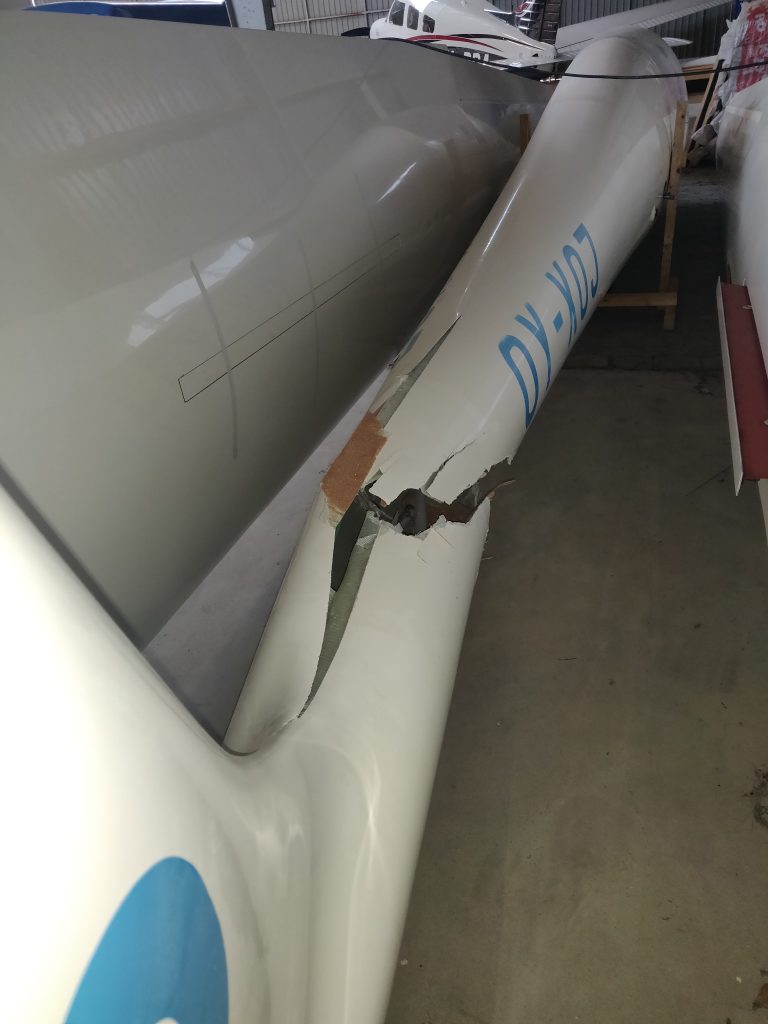Twin-Project
In 2019, we purchased two badly damaged Twin II gliders and an additional pair of wings. We didn’t want to miss out on what we saw as an unbeatable offer from Denmark, so we organized the financing and transport of the aircraft parts to Karlsruhe virtually overnight.
There were several incentives behind the project: to relieve the burden on the current training glider, to gather and expand expertise in aircraft maintenance, to improve the training capacities of Akaflieg and, ideally, to possibly even make a financial profit by fully restoring the second aircraft. It should be emphasized that the project is very well suited to involving interested parties and introducing them to aircraft construction. It is the first opportunity to take on real responsibility and lead a group. The practical skills that are taught range from on-board electronics to registration papers and fiber composite work. These are an essential part of being able to maintain and repair a glider.

Repair work has been in full swing since the purchase. One of the two Twins has already been completed and, after more than a year and a half and almost 2100 hours of work, was able to fly again for the first time in spring 2021. Before that, however, a lot of work was necessary: the complete overhaul of the controls, the renovation of the cockpit interior, the rebuilding of the front canopy, the repair of the spar tunnel, a general overhaul of the landing gear and the restoration of the electrics and instruments. In addition, a used aircraft trailer was organized and picked up in Poland. In the meantime, the D-8122 has become an integral part of the Karlsruhe aircraft fleet and is mainly used for training. Several A-tests and the first small cross-country flights have already taken place.


Work is currently continuing on the second twin fuselage. This requires a major repair to the fuselage tube, for which all preparations are already underway. The tail unit of the fuselage is twisted off. As this was damaged and would have required many more hours of work, a new one was purchased. The mold for the connecting piece of the fuselage tube is currently being built, which will then be connected to the front part of the fuselage and the tail unit in a self-made slipway. Another open issue is the wings, as the leading edges are missing on one pair and the ones currently in use will soon reach their 10000th hour of operation. Nevertheless, the next maiden flight should not be too long in coming.